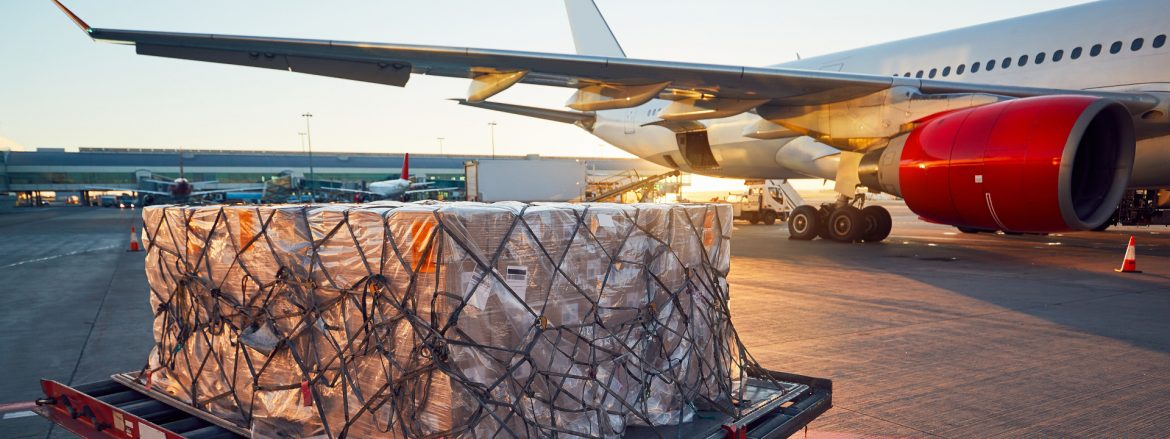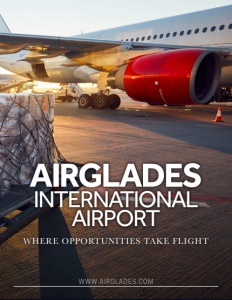Airglades International Airport
Where opportunities take flight
Business View Magazine interviews Lillie B. Rentz, Manager at Airglades International Airport, for our focus on U.S. Regional Airports
Imagine taking a general aviation airport and converting it to a logistics hub with an airport attached to it. That is the thinking behind the transition to Airglades International Airport in Hendry County, Florida. A perfectly poised location, sitting just five miles outside of Clewiston and 90 miles west of Miami.

Lillie B. Rentz, Airport Manager
“Hendry County has always been predominantly known for its agribusiness,” explains Lillie Rentz, Airport Manager. “Our project is going to bring new industries to the area – manufacturing, distribution, trade, and logistics. If you fly in over Hendry County, all you see is farms, a lot of agricultural lands, and in my opinion, an area where people can come in and grow their business. Hendry County has some of the highest unemployment in Florida and so working on this project brings a lot of promising opportunities to the area; including not just increasing the local tax base but also abundant job opportunities as a result of the project.”
Tracing its roots back to 1942, the airport was originally known as Riddle Field and had six flight training fields that trained more than 1300 pilots for the British Royal Airforce. After the war, the airport was decommissioned and turned over to Hendry County who have run it as a general aviation facility ever since. Over the last few years, it has been used for private aircraft, flight schools, skydiving schools, and crop dusting.
Through the last decade, however, this exciting new cargo logistics idea has percolated and developed. Miami International Airport is currently the busiest airport in the U.S. when it comes to importing cargo and perishable goods. In particular, they handle 79 percent of all air imports and 74 percent of all exports from the Latin American and Caribbean regions. So, as the top hub for receiving flowers, seafood, produce, and other perishables, they are stretched to the limit. The question begs, what if there was a fully equipped modern alternative that focused solely on the perishable market? That is what Airglades hopes to become. The $300 million project is jointly owned by three parties, with Florida Cargo Fresh having 49 percent, and 51 percent is split between the U.S. Sugar Corporation and Hilliard Brothers, a diversified agricultural operation.
The project would accomplish something that has never been done before, creating the first airport to be purchased by private capital. “Right now, we are at the stage of solidifying contracts,” says Rentz. “We need to have guaranteed volumes from importers and growers – and these volumes are the pounds of perishable goods that are coming to date through Miami International Airport. Once we have those contracts in hand, we will turn to marketing the investment portion of the project. Then we will continue to build the infrastructure.”

Marilyn DeVoe, VP of Operations
The mainstay of the project will be a new Perishable Cargo Complex which will be completely temperature-controlled and have different modules and chambers to accommodate different types of commodities. As Rentz explains, “Tropical fruit for example has to be stored at a different temperature than asparagus, flowers, seafood, etc. There are specific temperature ranges that are required by some of the retail giants and if the produce arrives at their warehouse that is not within the required range they will get rejected. We want to make sure that cold chain stays intact.”
She adds, “Coming to Airglades would also eliminate a lot of the “touches” – a lot of the handling of commodities happened off-airport at different cold refrigerated warehouses in Miami owned by many different companies. Because much of the storage is off-site, to get out of Miami International could take up to a week. We are proposing somewhere between a four-to-eight-hour turnaround and that would increase the amount of shelf life for these time and temperature sensitive commodities. There will also be additional warehouse and refrigerated space at the airport if some of these importers or growers need to further manipulate the product. Flowers, for example, when they arrive may need to be broken down and then placed into bouquets.”
Another factor in their favor is that Airglades exists along already established trucking and logistics routes. Truckers were some of the first people that were approached when thinking about what might be possible. Miami not only has a lot of traffic congestion but also adds about 200 miles to the round trip for the cargo trucks. At a shipping cost of $2.35 per mile, that adds up. Part of the new airport design includes a truck staging area to accommodate the parking and the truck traffic that is going to be coming into the airport.
In March 2020, construction for a new 4,000 square foot user fee custom and border facility was announced at Airglades. The airport would become a new port of entry to allow private international flights to pass through customs in Clewiston, rather than having to stop at a larger and busier airport. Moreover, a customs inspection facility will be added to the perishable cargo complex and would allow consolidation of all inspections in one location; unlike Miami International, which has 75 different locations for inspection.
With all this traffic, a new runway will be paramount. The plan is to create a 10,000-foot north/south runway with a parallel taxiway. “Florida provides the best flight time from South America,” says Rentz, “but most of the runways in the state are east/west. Our runway will be north/south and that would also eliminate flight time. Taxi time will also be significantly less. The idea is that as soon as a plane lands they will be able to taxi up to our new perishable cargo complex and be able to offload the cargo, so there will be a timely response. We must make sure that the cool chain is not disrupted at all. These same cargo planes will then load up on dry goods such as automobile or computer parts which we will ship south.”
Rentz points out that there are many people involved in a project this size and it would not be possible without them and the support of the County, the community and its business leaders. To-date, the airport is currently served by many local businesses that have a keen interest in being involved in the airport’s future project development.

Hernan Galindo, BP of Business Development
AvPorts has been selected as the airport operator to manage the Airport. According to Rentz, “They operate many airports in the US and are very familiar with what we have in mind and are a very eco-friendly company. They understand the local flavor and culture of agriculture in the area and will endeavour to make sure we are as green as possible. Then there is Worldwide Flight Services, a ground handler company that will be managing the perishable complex components. When I think of Airglades International, I see it more as a logistics hub with an airport attached to it. It is certainly a different focus for an airport.”
COVID-19 has slowed the project to some degree and, because of the pandemic, they have had to apply to the FAA for an extension. It is, however, still well underway in terms of solidifying investment by the end of this year and beginning construction, which will entail a 24 to 30 month timeline. The hope is to be completely operational by the end of 2023.
“When I first came on board and got a little more familiar with the project, the first thing I tried to do was to look for a fly in the ointment,” concludes Rentz, “and to be honest I still cannot find it. This project is a win-win for everyone involved. Not just for the users that are going to have those cost-saving benefits by coming to Airglades – they are looking at significantly cutting their costs versus their current operations in Miami – but we also have the county that really needs the employment. We will create 1400 full-time jobs once the airport is constructed, and this will continue to grow with far-reaching economic impacts.
“If you also look at the local businesses in Hendry County, which is primarily known for agriculture, I can see many opportunities because different components of the project could complement not just those who are at the airport, but also off. This will help drive more traffic, more business, and great new jobs and industries to the county that were not here before. To describe this growth best, what Walt Disney World did to Orlando is what the Airglades project will do for Hendry County.”
AT A GLANCE
Airglades International Airport
What: A general aviation airport undergoing an exciting private sector transition to cargo/logistics
Where: Hendry County, Florida
Website: www.airglades.com




